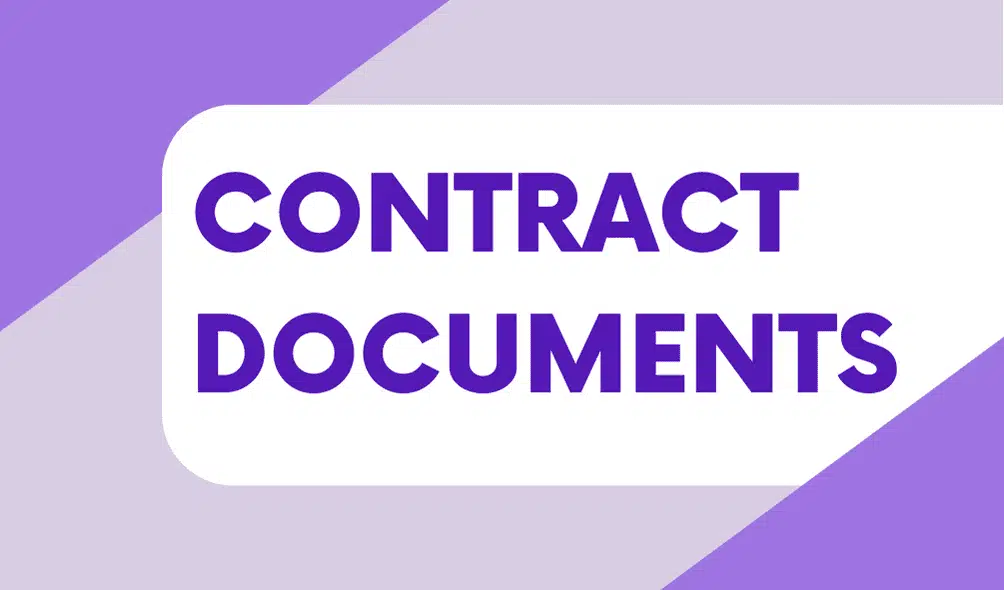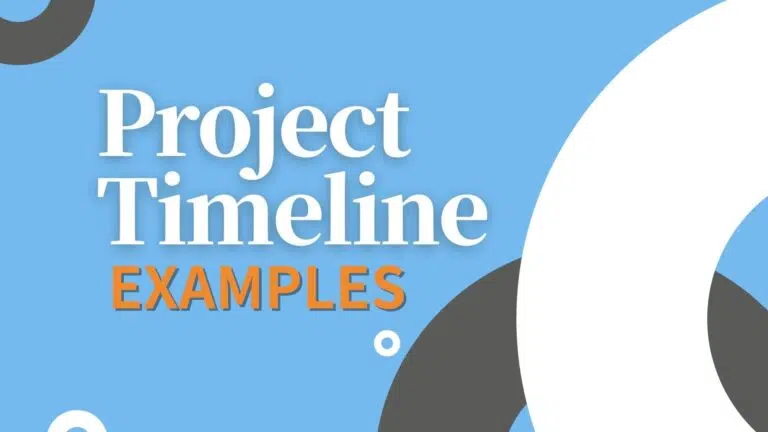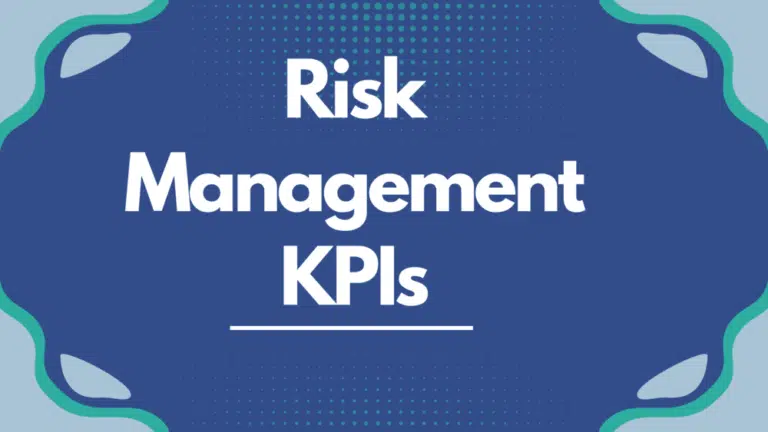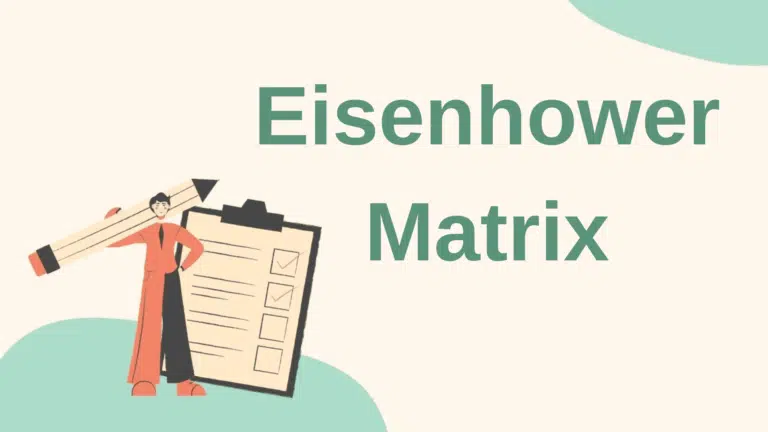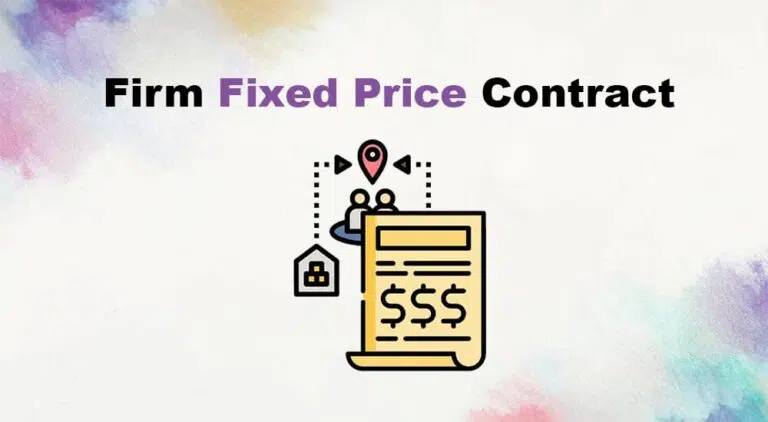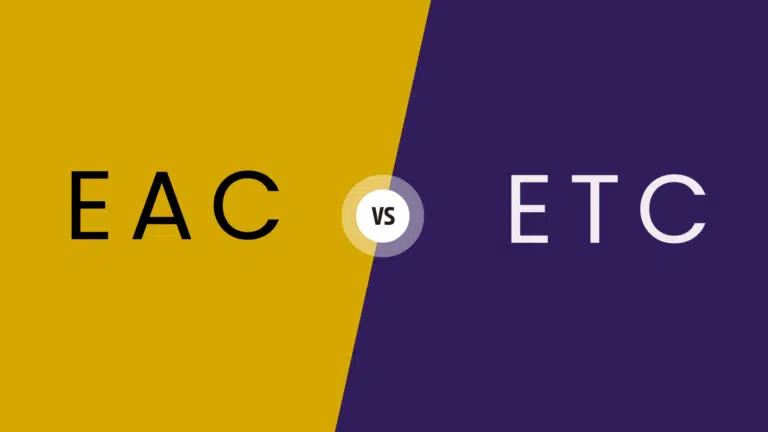A contract is a legal agreement between two or more parties. Contract documents are project documents that include the terms, conditions, obligations, and rights of all parties involved in the agreement.
They are written and are a legal definition of the contract. They are the legal force on the parties and the reference documents that describe the working conditions.
The contract documents provide details of every part of the contract to all stakeholders so they can understand their roles and responsibilities in the agreement.
Since the contract document is legal, you must involve legal experts from your organization to ensure it does not break laws and complies with all necessary regulations.
A contract document is not one document; it consists of many documents, and in today’s blog post, we will briefly study a few contract documents.
11 Types of Contract Documents
Contract documents can be of many types depending on the contract type, parties involved, local laws, and the location.
However, the following documents are most commonly used in contacts globally:
- Agreement: This contract document is sometimes known as a “Memorandum of Agreement (MoA)” or “Memorandum of Understanding (MoU).” It includes the names of all parties and their tasks and defines the agreement between the client and the contractor. It is the main document, and other documents are attached to it. This document outlines the goal of the contract, key stakeholders, fees, etc.
- General Conditions: This document includes the obligations of all parties, general conditions, overhead costs, bonuses, and other conditions. The general conditions provide the basis of the contract, thus establishing the rights and duties of all parties. General conditions address how modification orders are issued, invoices are processed, disputes are settled, etc.
- Special Conditions: This contract document is sometimes known as “particular conditions.” Special conditions specify unique job needs and instructions. They are additions or changes to the overall requirements. Particular conditions include specific circumstances about certain jobs or the entire project.
- Scope of Work: The scope of work includes a detailed description of the project milestones, deliverables, etc. It is provided by the client, and it is included in the tender documentation. The scope of work is a key project management document. A change in this contract document requires approval from all parties and possibly additional costs.
- Blueprints: These include drawings to show quantity, measurements, sizes, shapes, and forms of elements. Examples of blueprints are architectural, statistical, electrical, mechanical, and landscape drawings. For construction contracts, blueprints can include drawings of elevations, sections, etc
- Specifications: Technical specifications describe the materials, quality, product, etc. Consider the following when developing effective specifications:
- They must be written by experts.
- They must be created collaboratively and transparently.
- They must be available to the team from start to finish.
- Bill of Materials: The bill of materials (BoM or BM) specifies quantifiable items for the contract. A cost consultant uses drawings and specifications to create the bill of materials. A bill of materials is a detailed description of the materials, parts, and labor needed. The bill of materials helps bidders calculate costs for the tender. It ensures a fair, accurate tendering process, which requires all bidders to provide pricing details for the same items. In case of a mismatch between the bill of materials and other contract documents, the price in the bill of materials will take precedence. The bill of materials is also known as a “bill of quantity.”
- Schedule: A schedule is a graphic presentation of project activities. Project managers use Gantt Charts, Network Diagrams, CPM, and PERT techniques to create project schedules. A project schedule outlines the timeline, milestones, project duration, task dependencies, etc.
- Schedule of Values: In this document, a contractor provides a value schedule that lists all project tasks. It divides the contract price among all items. The schedule of values helps assess progress. This document can assist with getting bills paid on schedule.
- Form of Tender: This document includes the final contract price and validity details. In case of a mismatch between prices in FOT and other contract documents, the price in the FOT will take precedence.
- Bid Bonds and Performance Bonds: Public tenders require a bid bond and performance bond. Bid bonds are submitted with the bids, and performance bonds are submitted as a guarantee when the contract is signed. These bonds protect the buyer if the contractor fails to perform their obligations.
Key Inclusion in Contract Documents
The following are the key elements of contract documents:
- Parties to the Contract: The parties are the first element in a contract document (e.g., the name of the business providing the service and the name of the entity receiving the service).
- Types of Contracts: There are four basic types of contracts: (1) time and materials, (2) fixed-price contracts, (3) cost-reimbursable contracts, and (4) purchase orders.
- Background Section: A contract document should have a background section. This section can include details on the transaction, the parties involved, and the contract itself.
- Terms and Conditions: Terms and conditions are the most extensive element of the contract document. All contracts have this provision to protect all parties involved. The issuing organization may need help from an attorney or legal experts to draft this portion of the contract document.
- Signatures: All parties must sign a contract; otherwise, it won’t be legal. Signing the contract ensures that all parties understand the terms and conditions and agree on the services and payment procedure.
Advantages and Disadvantages of Using Contract Documents
Contract documents are beneficial for all parties. It clarifies the expectations of all parties by defining their roles and other terms and conditions. This helps avoid conflicts.
The following are a few benefits of contract documents:
- They ensure clarity in business relationships, agreements, and parties’ rights.
- They avoid potential contract disputes and litigation.
- They prevent misinterpretation of communications and agreements.
- They provide better management of commercial relationships.
- They provide built-in arrangements for resolving disputes through arbitration, mediation, or in court.
The only drawback of contract documents is the effort required to prepare these documents. Preparing contract documents requires help from subject matter experts and legal professionals, which is costly and time-consuming.
Conclusion
Contract documents are essential for every project since they specify the rights and duties of all parties involved. A well-defined contract document is the basis of a sound business relationship and helps avoid conflicts.

I am Mohammad Fahad Usmani, B.E. PMP, PMI-RMP. I have been blogging on project management topics since 2011. To date, thousands of professionals have passed the PMP exam using my resources.

